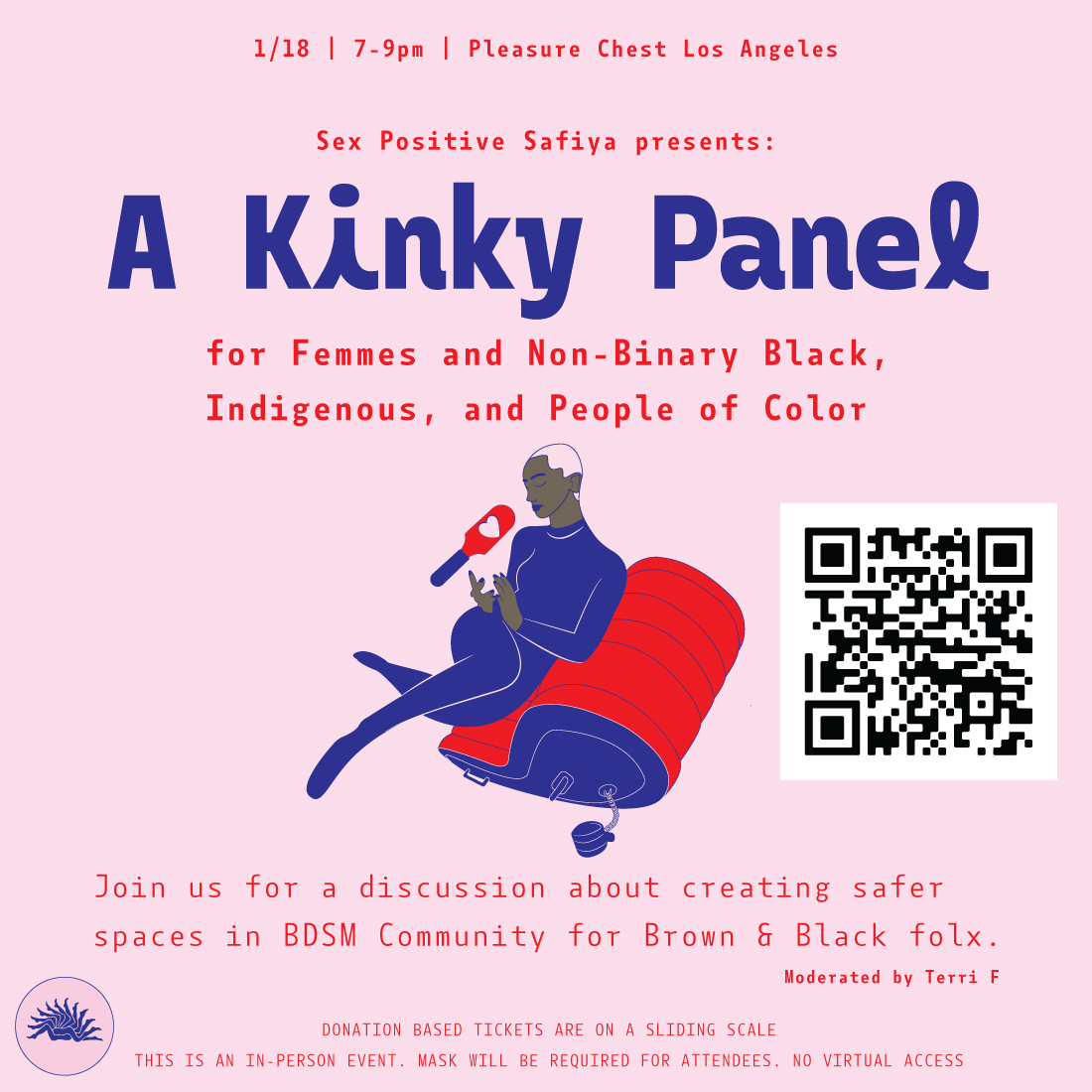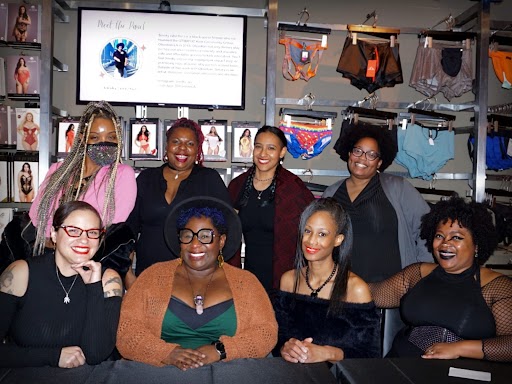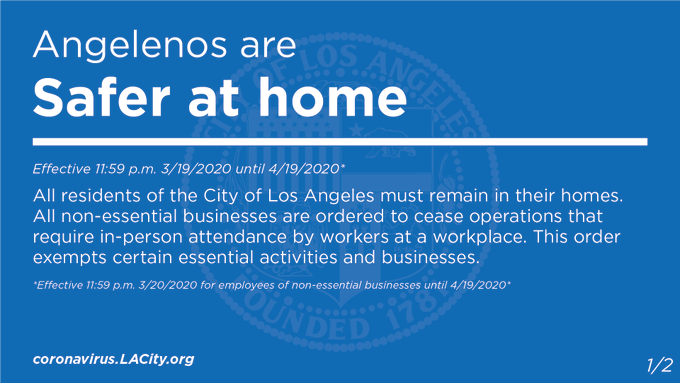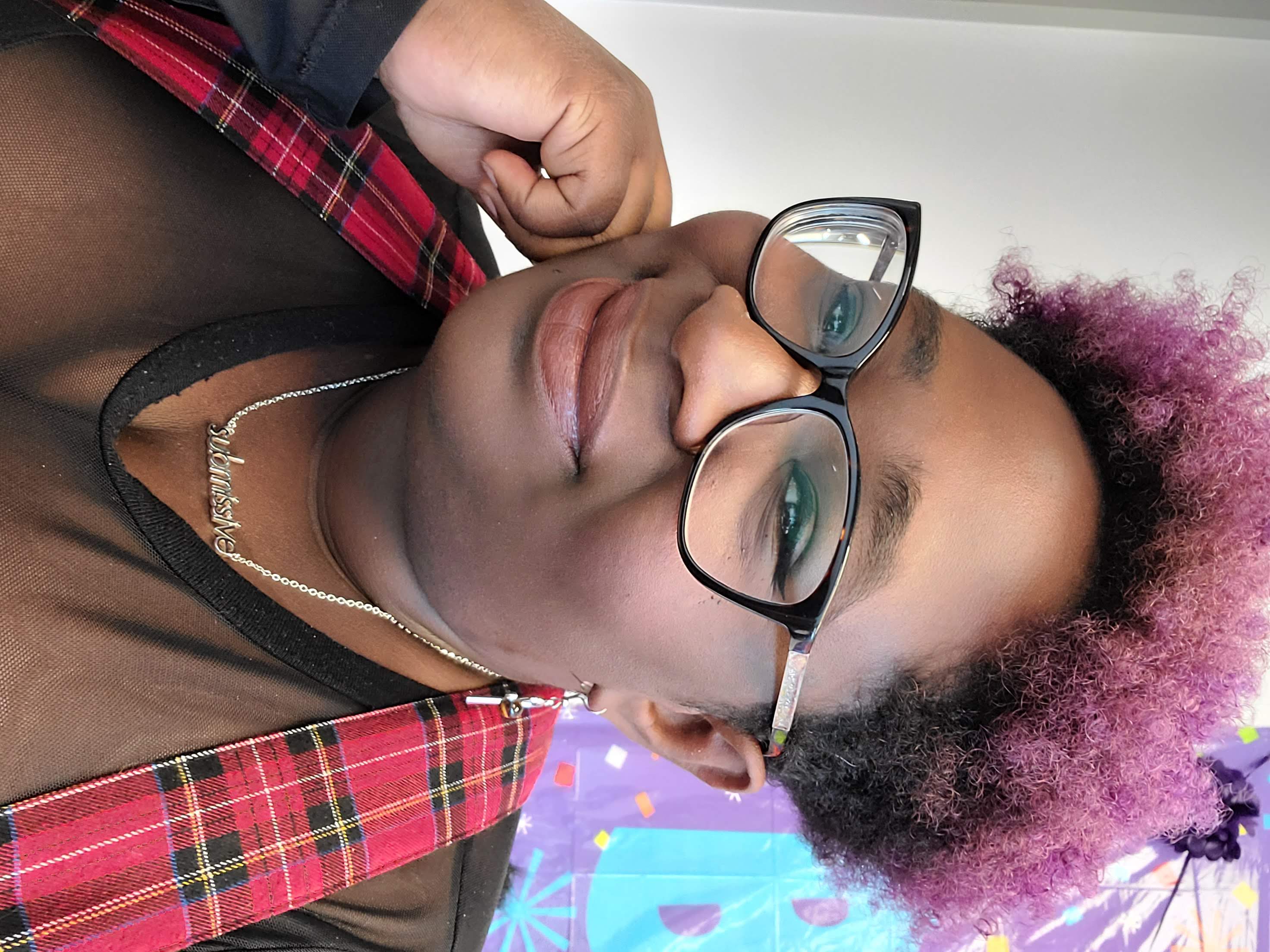Panel Discussion for the BIPOC & BDSM Communities | The Pleasure Chest
On January 18th, A Kinky Panel for Femmes and Non-Binary Black, Indigenous, People of Color was held at our Los Angeles store location. In case you weren't able to attend, read panel host Safiya Darling's recap to see what you missed and gain some insight on the unique challenges faced by BIPOC in the kink community.
**
This panel was created to help raise awareness of the unique challenges that the Kinky Black, Indigenous, People of Color (BIPOC) community face in their BDSM journey. This panel was designed to provide insight and support to kinky BIPOC MOGAI (marginalized orientations, gender alignments, and intersex) not only in the Los Angeles BDSM community but throughout the United States. Conversations around the topic of racism are never easy, but it's essential to discuss to help promote change within our community.

It's not uncommon for a black or brown woman of color to attend an event and feel isolated in a room full of people. Even for me; I'm a 35 year old Black, Kinky, Queer woman who was raised in the Midwest. I currently live in Los Angeles, California as a sex educator. I've been active in the community for thirteen years. (So, I've been to my fair share of Kinky events and parties.)
Sometimes it feels like living inside of a shot glass, inside of a mason jar, inside of a fish bowl, at the bottom of a swimming pool.
Being a part of a small subcategory inside a community of people can feel as if you are isolated from the rest of the world. The experiences of kinky BIPOC women in Los Angeles are invaluable and their stories must be heard. Social media has played an important role in helping to document the experiences of kinky BIPOC women in Los Angeles. Through platforms such as Instagram and Twitter, kinky BIPOC women can share their stories, connect with like-minded individuals, and find resources and support. Social media has also enabled them to create safe, inclusive, and empowering spaces for kinky BIPOC women, and to create a more inclusive and diverse BDSM community. With the help of allies and mentors, and the availability of resources and support, kinky BIPOC women in Los Angeles can continue to make a positive impact in the BDSM community.
Just for reference:
The population of the state of California is 39.24 million people.
The population of the county of Los Angeles is 3.9 million people.
The population of Black/African American people in Los Angeles is 348,000.
According to Fetlife.com, 108,000 people living in Los Angeles participate in the Bondage, Discipline/Dominance, Sadism/Submissive, Masochist (BDSM) scene. This is excluding the anonymous members who pretend to reside in Antarctica.
Nestled within them is a small group of Black & Brown kinksters.

A Kinky Panel panelists from left to right: (top) @itslotuslain, @jamila.thesextherapist, @sylkysmooth_, @terrijaneef, (bottom) @bettie_bondage, @sexpositivesafiya, @wickedtheswitch, @smoky_qo.
The New Wave of Kinky People

The BDSM/Kink community has gone through its own version of a baby boom over the last two decades. In 2011, the release of E.L James' Fifty Shades of Grey book series doubled the number of people experimenting in kinky activities. Then another boom was seen in 2015 with the release of the Universal Pictures movie series.
The latest and arguably biggest boom has come with the 2020 Covid-19 quarantine. Many globally were forced to slow down due to the Safer-at-Home orders and got to use some of their free time to discover some new interests. Folks were presented with the unique opportunity to be able to privately enjoy some new "hobbies" that they didn't have time for in the past. Kink-focused Youtube channels, erotic book authors, TikTok channels, and podcasts were performing at record numbers. This new wave of kink-curious folks has not only caused a shift in the at-large community; the effects can be seen in the L.A. kinky ecosystem overall, in both good ways and bad.

The easiest thing to compare the kink community to is a workspace. Each work environment has its own set of rules, hierarchy, and regulations that are set up by the company and the "house roles'' that are created by the staff. Colleagues have their ways of coexisting with each other which allows everyone to perform their job effectively and respectfully. In an ideal workspace, this allows people to be productive and mindful of boundaries. Each space's unique system is best understood from the inside and new additions would need to gradually acclimate to the environment.
So imagine this: You go into the office, for what you think is going to be a regular day. You grab a cup of coffee and a scone from the breakroom, then proceed to your desk to start work. Then a flood of excited newbie employees stamped out of the elevator. You feel like Simba in that scene of the Lion King. This herd of humans hasn't read the employee handbook or been through new hire training with HR; they just walk in and start "working." They have smiles and are eager to get started. They came to this first day of work with the best of intentions, not realizing they are moving too fast. Sitting at whatever desk they want, eating people's food in the refrigerator. The office has quickly become chaotic.

Applying this to the recent booms we've seen in the community, it is easy for bystanders outside of the BDSM world to feel like our way of expressing ourselves is chaotic. Something that you notice in mainstream movies like Fifty Shades of Grey, 365 Days, and The Secretary is a lack of community. There is an absence of those kinky people having other kinky people to support them, guide them, mentor them, train them. Mainstream media productions rarely have insight to the nuances and subtle rules that exist in the kinky realm. We are painted as people who just ask someone out and tie them to a bedpost on the first date. Or that we are just sexual deviants who try to non-consensually trick potential suitors into a dominant/submissive dynamic.
I'll admit that I was a bit shocked when I started my journey in BDSM/kink in 2009, but I quickly realized that there is a method to the madness. There is a unique system of rules, protocols and rituals that are in place to minimize the probability of negative outcomes. In the 1980's, this motto came to be known as Safe, Sane and Consensual or SSC. This ideology means that all people participating in a kink activity will contribute to creating a Safe physical and mental space. Each individual has the responsibility of maintaining a Sane sense of balance between fantasy vs reality. This understanding creates trust between individuals which can lead to the Consensual choice to participate in kinky play. Over the last three decades, this motto has evolved and expanded to include similar ideologies like PRICK, RACK and CCCC.
PRICK, or Personal Responsibility Informed Consensual Kink is the philosophy that you are Personally Responsible for researching and understanding the consequences (good and bad) of the activity, so that you may give Informed Consent when engaging in Kinky play.
RACK, or Risk Aware Consensual Kink is the philosophy that prior to engaging in an activity, all parties involved understand the Risk. Each person must be Aware of the physical, mental & psychological consequences. All of the individuals agree that they are giving uncoerced Consent to participating in this Kinky play.
CCCC, or Caring, Communications, Consent, Caution is the philosophy that each person involved will illustrate Care for each other by building trust and practicing good Communication skills. The players are practicing dynamic Consent in respecting each other's boundaries at all times and will use Caution because their activities may be risky.
All of this boils down to respecting each other's mind, body and spirit. That doesn't sound hard right?
There seems to be a misconception with this new tidal wave of BDSM newbies, where they conflate the mainstream information they have consumed from mass media with the "real life" behaviors of the community. They are confused about what those spaces are for, thinking that a gathering of sensual people equates to an orgy like they've seen in porn. Don't get me wrong, there is plenty of sex happening in the BDSM community, but the connection comes first. This misunderstanding is reducing the safety in our safe spaces.
The common offenders are Cis-Heterosexual Men who are just looking for a "freaky chick" or a quick hook up, versus looking for a person to enter in a dynamic or play partnership that contains substance. This type of cis-het man is just violating his way through events and disappearing, instead of taking accountability.
There is no wrong way to be a D-type or s-type (Dominant or submissive), but there is a wrong way to navigate this community. In what we call "the vanilla world," the rules regarding consent, personal space and dating are more relaxed than what you would observe in kink spaces. Every kink community has its own general standards and codes of conduct. Something that is consistent amongst all communities is body autonomy. For example, a standard greeting in vanilla spaces is to shake hands or offer a light hug; in BDSM spaces we ask for consent to enter someone's personal space. We don't make assumptions that someone "doesn't mind" being touched or put them in an awkward position to accept an unwanted embrace. To outsiders this might seem extreme, but the intention is to empower people to be able to make their own choices regarding their bodies, minds, and spirits, and most importantly to encourage them to have the freedom to say no to anything they don't desire.
Identifying and Dismantling Racism in the BDSM Community
Many kinksters find sanctuary in the BDSM community. They are able to be vulnerable and express their interest in a way that their friends and family members don't understand. They attend events like munches, play parties, festivals, and conventions. They use websites and utilize chat rooms to express themselves. These are safe spaces for people to share without judgment, to socialize, to find play partners, to explore new kinks/fetishes, and to gather new information to safely develop new kinky skills. They enter this space and find a group of people that promote TRUE body positivity, which can be life changing. One of the BEST things about the kink community is that whatever you don't like about your body, there is someone here who loves it. The same things that you are insecure about, whether it be height, body hair, physique, the sound of your voice, stretch marks, etc., are all things that turn someone on. They are the same qualities that someone yearns for. They are also the same qualities that get someone sexually aroused.
An element that often gets fetishized is race. More specifically, the skin color, hair, and body shape of Black and Brown women. Kinky BIPOC women in Los Angeles and throughout the global community are often the most marginalized and overlooked. They are often subjected to racism, sexism, transphobia, and other forms of discrimination. This inequity can take many forms, from microaggressions and tokenization to outright harassment and exclusion from events and spaces.
Black & Brown women are already fighting an uphill battle of no longer being treated like disposable sex objects and play things. They are fighting hard to be treated as a partner who is worthy of being desired, courted, seduced, and to have her time valued.
It is important to be educated on kinky BIPOC issues for several reasons. It helps to broaden one's understanding of the complexities of race, ethnicity, and culture. It also helps to build empathy for the unique experiences of BIPOC inside the BDSM community. By doing this it helps to become a better ally to BIPOC kinksters, providing the knowledge and skills needed to identify and stand up to racism and other forms of discrimination.
A Kinky Panel: Q&A with the Panelists
All the women on the panel were asked the same questions, regarding their experiences in the community. Here are a few of their answers:
How do you navigate microaggressions as a BIPOC in BDSM?
"If it [the microaggression] is coming, [I] don't care [if it's] about or from someone that I don't know, I'll just disengage and walk away. You're not worth my time. If it's from a person that I'm trying to build a relationship with, then I would do a 'call in' rather than 'call out.' I'd take the time to be like, so that was f***** up and let me tell you why, and let's talk about it…The thing about microaggressions which makes them so insidious, is that the people who are doing them don't know they are doing it. They have no idea that they are the perpetrator of a microaggression and their words come from implicit biases instead of those explicit ones. So it's really important to call out so that somebody can recognize it and that can disrupt the cycle" - Smoky, @smoky_qo on Instagram
What things have been automatically assumed about each of you?
"Folks mostly assume I'm submissive and highly sexual. I'm not a big talker so a lot of folks think I'm new at kink and can be easily persuaded to engage in play. Then I hit them with, "Well actually," and inform them that their assumptions are wrong." - Sylky, @Sylkysmooth_ on Instagram
How do you find partners? Is your vetting process different for a non-BIPOC? If you only play with other BIPOC, what influenced your decision?
"I've met most of my partners while attending classes, from mutual kinky friends, at local play parties and inclusive events like the Dyke Day LA picnic. I have found kink partners online, but I always make a point to meet them in person for a coffee date. This allows me to do a vibe check and see if our intentions are the same... I vet all of my partners, regardless of their race. Vetting is the best way to ensure my safety. Trust, but verify. - Safiya Darling, @sexpositivesafiya on Instagram
What do you enjoy about playing with only other BIPOC? What do you feel is lacking if anything? What would you like to see more of? Less of?
"Being a professional Switch, I will play with everybody who meets my professional qualifications. …. It does feel a lot more special to play with a person who looks like me. - Wicked, @WickedtheSwitch on Instagram
What can non- BIPOC do or read to be culturally aware in pursuit of BIPOC?
"As a Latina woman, I've had to learn and educate myself on certain cultural issues. I would suggest for them to take classes from other BIPOC people. Do their own research and not rely on the labor of other brown and black people." - Mistress Bettie Bondage, @bettie_bondage on Instagram
Since much of BDSM (not all) is about power, degradation and bondage, how do you navigate those elements in the context of our history as marginalized and enslaved people?
"I choose to take my power back… I want to f**k with power dynamics. I want to f**k with the power of my ancestors from 400 years ago until the power that I have now. I want to do what my ancestors couldn't do." - Jamila, @Jamila.thesextherapist on Instagram
What would you tell someone who is just starting their BDSM journey?
"Keep the curiosity, you know weird things can happen in any situation, just be aware of your own boundaries….. It's very tempting to take up all these offers, [but] take your time to watch how people play and interact first to help ensure that you will have better outcomes and sessions." - Lotus Lain, @ItsLotusLain on Instagram
How to be an Ally to the BIPOC Community
For non-black or brown people, being an ally to the BIPOC kink community involves more than just creating inclusive and safe spaces for BIPOC kinksters. It also involves actively listening to and amplifying the voices of BIPOC kinksters and supporting their efforts to create more inclusive and safe spaces.
This can involve attending BIPOC-led events, donating to BIPOC-led organizations, and engaging in meaningful conversations about race, ethnicity, and culture in the BDSM community. It can also involve educating yourself on kinky BIPOC issues and standing up to racism and other forms of discrimination. Finally, it is important to be open-minded and understanding of the unique experiences of BIPOC in the BDSM community.
There are many resources available for educating oneself on kinky BIPOC issues. These include books, articles, websites, videos, and more.
In addition, educating oneself on kinky BIPOC issues can help to create a more inclusive and safe space for BIPOC kinksters. By understanding the unique experiences of BIPOC in the BDSM community, we can create spaces that are more welcoming and respectful of the diversity of kinksters, regardless of race, ethnicity, or culture. This can help to create an environment where everyone can feel safe and comfortable exploring their kinks.
Safiya Darling (she/her).
She is a Sex Educator and a Kink specialist. She has been active in the kinky community for 13 years. She's Polyamorous and identifies as a submissive.
She's passionate about empowering others to understand more how their bodies work and debunking myths about sex that are rooted in racism, misogyny and transphobia.
You can often find her at events and creating content to educate people how to practice Kink/B.D.S.M. consensually and safely.







